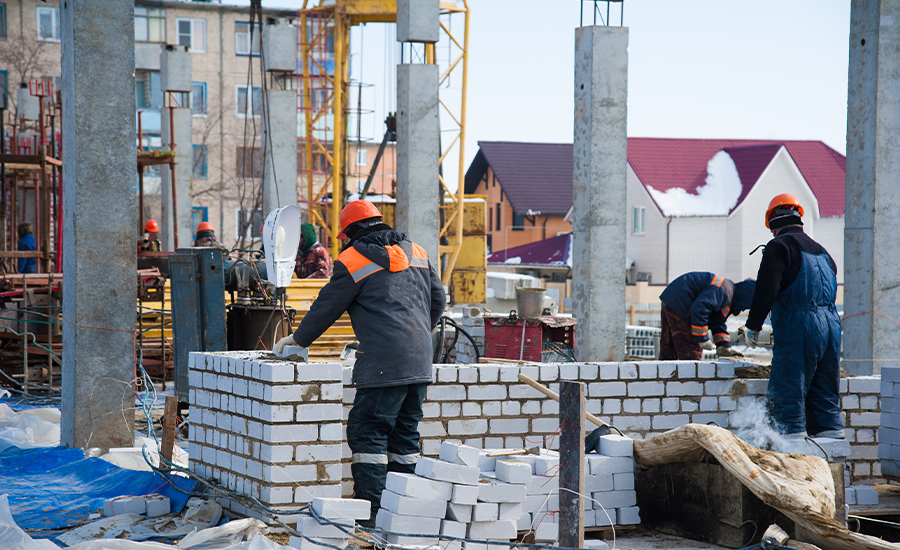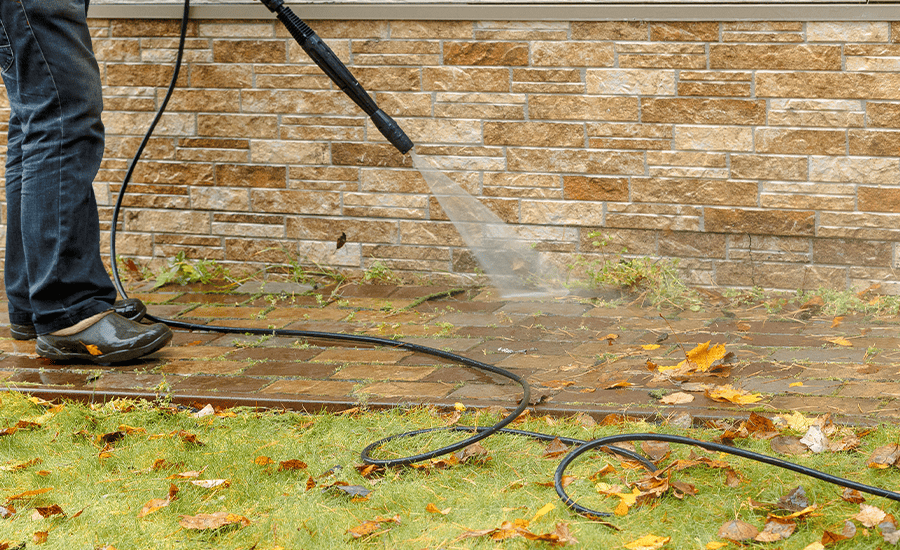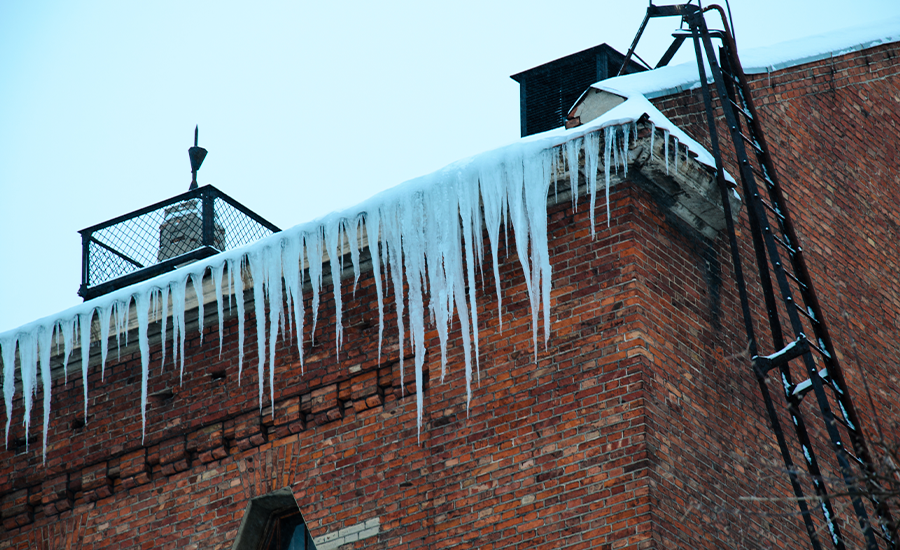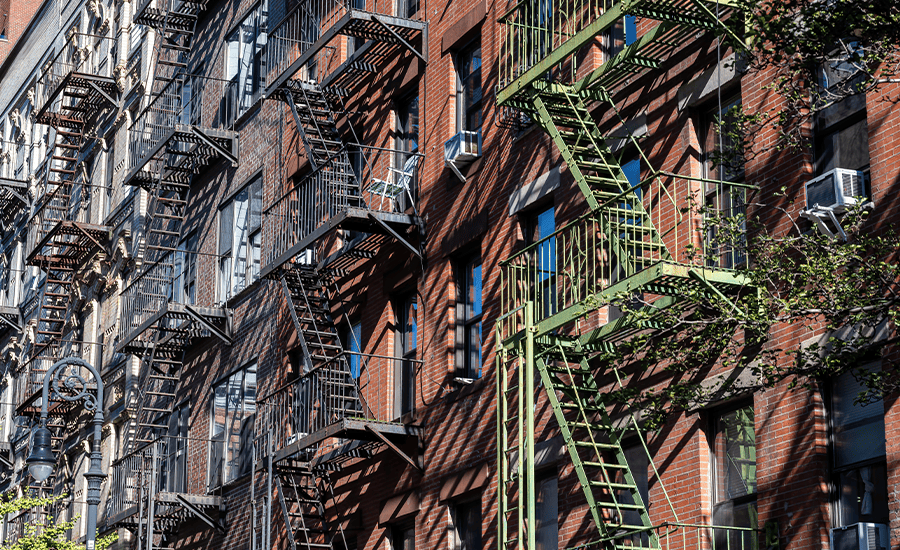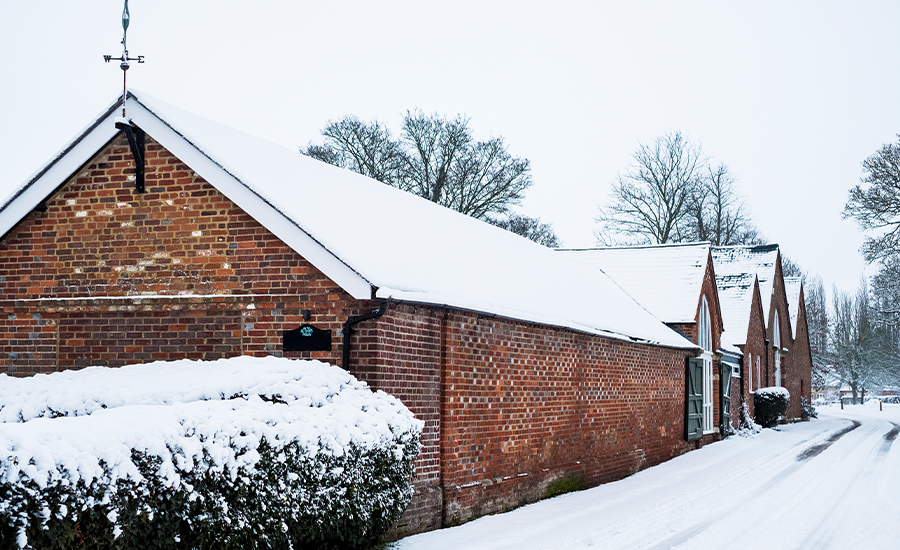Are you noticing cracks, gaps, or loose mortar in your masonry? It may be time to consider repointing Brick, but the first thing is to understand what is repointing.
Repointing is the process of replacing damaged or deteriorated mortar joints in between bricks or stones. This not only restores the beauty of a building but also maintains its integrity and structural stability. We’ll cover several repointing techniques, discuss the advantages and disadvantages of the method, show you how to do it yourself step-by-step, offer substitutes for repointing brick, and much more in this guide. By the time you finish reading this article, you will understand more about what repointing brick is and why it is important for maintaining your property’s value.
What is Repointing Brick?
Repointing brick is a method of repairing the mortar joints between bricks or stones in a masonry structure. Over time, weather and other factors can cause the mortar to deteriorate, which can lead to cracks and gaps that compromise the stability of your building. Repointing helps restore not only the appearance but also the structural integrity of your property.
The process involves removing damaged or decayed portions of existing mortar and replacing it with new material. The new mortar must match the original’s color, texture, and composition as closely as possible for aesthetic purposes.
Different types of repointing techniques depend on how much repair work needs to be done. Partial repointing involves fixing specific areas while full repointing involves replacing all joints entirely. It’s important to identify which type is needed before beginning any repairs.
Repointing brick requires skill and expertise; otherwise, it may result in further damage or poor aesthetics if done improperly. Therefore, it’s best to consult with professionals who have experience in this field before attempting any DIY projects on your own.
The Different Types of Repointing
When it comes to repointing brick, there are several different types of techniques that can be used. The type of repointing used will depend on the condition of the brick-and-mortar, as well as the desired outcome.
- First off, there is flush or flat joint pointing which is a very basic technique where the new mortar is applied flush with the surface of the brickwork. This method works best for bricks that are in good condition and don’t require a lot of repair work.
- Next up is weather-struck pointing, where a concave shape is created in which the new mortar sits slightly below the level of the brick face. This helps to direct water away from entering into any gaps between bricks.
- Raked-out pointing involves removing some existing mortar before applying new material, creating an angled profile that sheds water more effectively than flat joints while still maintaining some degree of breathability.
- There’s also ribbon pointing which looks like thin ribbons or lines running through each row horizontally. It adds texture and dimensionality to your walls but requires extra effort because it needs precise execution.
- Penny struck point features small “penny-sized” protruding beads along with deeper grooves at regular intervals on the top surface compared to other styles making it ideal for older buildings with softer bricks since they provide greater resistance against wind-driven rainwater ingress
It’s essential to know what type suits your property when considering repointing as using improper methods may lead to further structural damage down the line; so always hire a professional!

Pros and Cons of Repointing Brick
Repointing brick is an essential process for restoring the beauty and integrity of masonry. However, like any home improvement project, it comes with its own set of advantages and disadvantages.
- One significant advantage of repointing brick is that it can prevent water damage from seeping through the cracks in the mortar joints. This can help preserve the structural integrity of your building and increase its lifespan.
- Another pro to consider is that repointing brick can improve your property’s curb appeal. The new mortar will blend seamlessly with the existing bricks, creating a more polished appearance.
- But there are also a few cons to be aware of. Repointing brick is often labor-intensive and time-consuming, which means you’ll need to hire professionals or invest a lot of time into doing it yourself.
- In addition, if not done correctly or using poor-quality materials, repointing can cause more harm than good by introducing additional moisture problems or weakening the structure further.
While there are both pros and cons when it comes to repointing brick walls, careful planning and execution with high-quality materials will ensure a successful restoration process.
Step-by-Step Process to Repointing a Brick
Repointing brick is an essential step in maintaining the beauty and integrity of masonry. Here’s a step-by-step guide to help you repoint your brick with ease.
- Assess the Damage: Start by assessing the damage done to your bricks. Look for cracked, missing, or damaged mortar joints that require repair.
- Remove Damaged Mortar: Use a chisel or grinder to remove the damaged mortar from between the bricks. Be careful not to damage any surrounding bricks during this process.
- Clean out Joints: After removing all damaged portions of mortar, use a wire brush or compressed air to clean out any remaining debris between the joints.
- Mix Mortar: Mix your new mortar according to manufacturer instructions until it reaches a consistency similar to peanut butter.
- Apply New Mortar: Using a trowel, apply the new mortar into each joint at an angle that matches adjacent joints. Make sure there are no air pockets in between layers of new and old mortars before applying more layers on top if needed
- Smooth Out Joints: Once you’ve filled all gaps with fresh mortar, wait for it dry slightly before smoothing out joints using a tool like a pointing trowel or jointer depending on the desired finish
- Clean up Excess Mortar and Allow It To Cure: Clean off excess mortar using water and a sponge then allow cured time advised by the manufacturer usually about 24-48 hours depending on climate conditions
By following these steps, you can keep your masonry walls looking beautiful while ensuring their long-term structural integrity!
Must read: Remember that repointing brick may seem daunting at first but as long as you take it slow step-by-step you should have no problem completing this DIY task on your own!
Alternatives to Repointing Brick
If you’re looking to restore the beauty and integrity of your masonry but don’t want to go through the hassle of repointing brick, there are some alternatives that you can try.
One option is to use a paint or stain specifically designed for masonry. This can help cover up any cracks or discoloration in the bricks without having to remove and replace them. Remember to do your research before proceeding, as this method may not be suitable for all types of brick.
Another alternative is to install veneers over your existing brickwork. Veneers come in a variety of materials, including stone and synthetic products, which can give your home a fresh new look without having to completely replace the masonry.
You could also consider using caulking or sealant as a temporary fix until you’re able to properly repoint the bricks. However, keep in mind that this method won’t provide a long-term solution and may need frequent maintenance.
Ultimately, each alternative has its own set of pros and cons depending on what type of issues you’re trying to address with your masonry. It’s best to consult with a professional contractor who must know, what is brick pointing, repointing, etc., and also can advise you on which option would work best for your specific situation.
Conclusion
Maintaining the beauty and integrity of masonry is essential for any property owner. Repointing brick is a crucial step in ensuring that your home or building remains strong, stable, and aesthetically pleasing.
We’ve covered everything you need to know about what is repointing brick in this guide. From understanding what it is, the different types of repointing available, pros and cons, to the step-by-step process involved.
Remember that regular maintenance can help prolong the lifespan of masonry structures. Don’t hesitate to consult with professionals when needed. Consider alternatives such as caulking or rendering if repointing isn’t feasible.
Keeping your masonry structure well-maintained through proper techniques like repointing will ensure its longevity while also improving its overall appearance. So go ahead! Take care of those bricks today!
FAQs
Q: What is repointing brick and why is it necessary?
A: Repointing brick is the process of renewing the external part of mortar joints in masonry construction. Over time, weathering and decay deteriorate the mortar, and repointing becomes necessary to ensure the structure’s stability and weather resistance. This helps maintain the building’s aesthetic appeal and structural integrity.
Q: What signs indicate the need for repointing brick?
A: Visible cracks, gaps in the mortar, loose bricks, or easily crumbling mortar may indicate the need for repointing brick. These symptoms suggest that the mortar no longer supports the bricks adequately, potentially compromising the structure’s safety and durability.
Q: How often should repointing brick be done?
A: The building’s exposure to harsh weather and the quality of the original mortar determine the frequency of repointing brick. Generally, repointing is recommended every 15 to 20 years. However, it’s wise to regularly inspect the mortar joints and consider environmental factors that might accelerate deterioration.
Q: What are the key steps involved in repointing brick?
A: Key steps in repointing brick include removing the old, damaged mortar to a sufficient depth, thoroughly cleaning the joints to remove any loose material, selecting and preparing the right mortar mix that matches the original mortar in strength, color, and composition, and carefully applying the new mortar using appropriate tools and techniques.
Q: Can repointing brick be a DIY project, or should it be left to professionals?
A: While repointing brick can be a DIY project, it requires specific skills, tools, and knowledge about materials and techniques. Most homeowners should hire professionals with the necessary expertise. They perform the repointing correctly and safely, thus preventing further damage and preserving the structure’s integrity.




